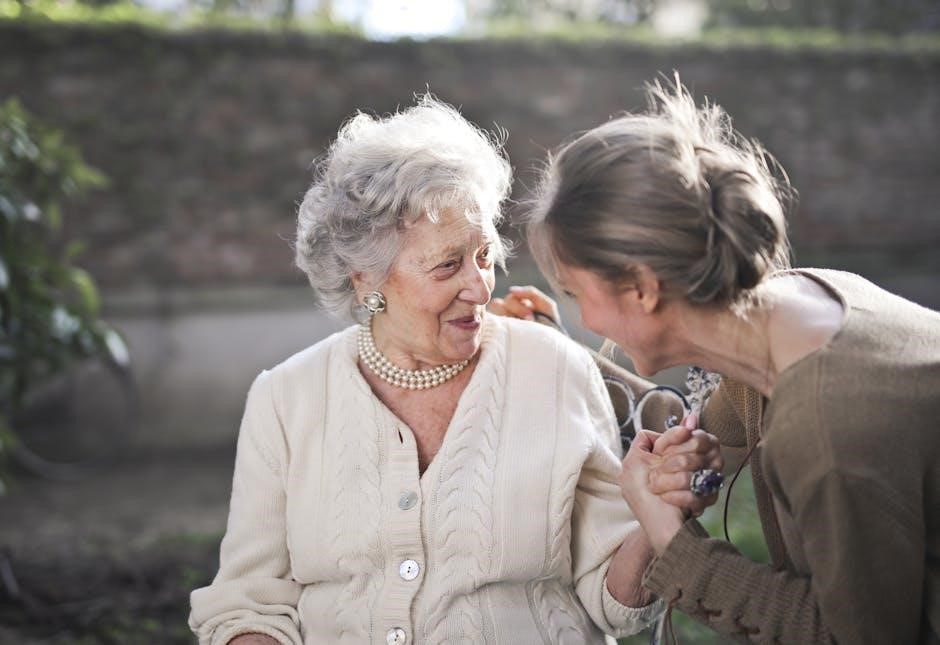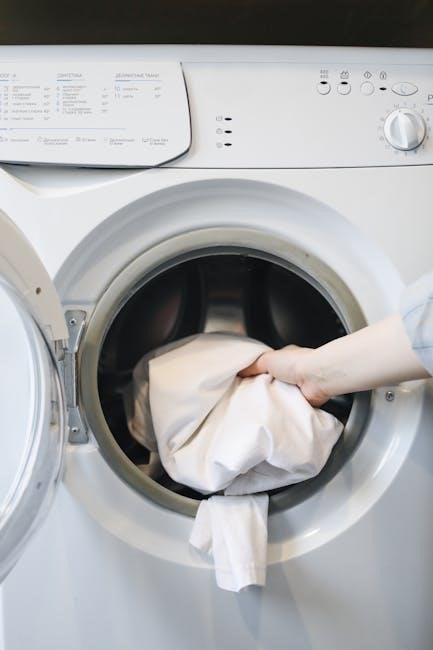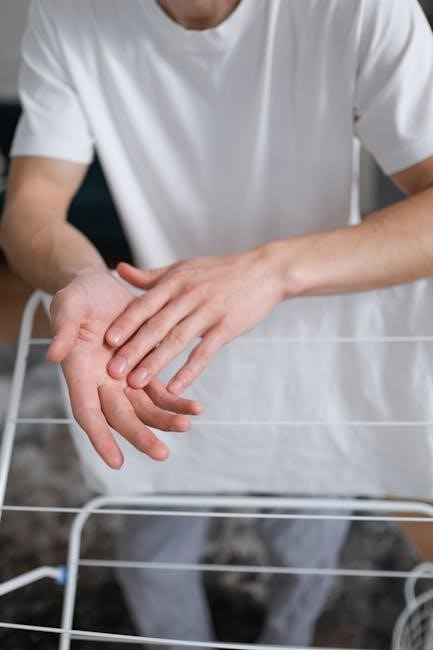Manual handling in aged care involves physical force to move patients with age-related conditions, requiring
- proper training
and education for care workers to ensure safety and dignity for residents always.
Definition of Manual Handling
Manual handling in aged care refers to the use of physical force to move, transport and support patients who have difficulty moving due to age-related conditions. This can include tasks such as lifting, transferring, repositioning, and supporting the movement of residents. Manual handling is a fundamental aspect of the aged care industry, and it is essential for care workers to understand the definition and scope of manual handling to provide safe and effective care. According to industry guidelines, manual handling involves the use of physical effort to handle or support a person, and it requires proper training and education to ensure that care workers can perform these tasks safely and efficiently. The definition of manual handling is crucial in aged care, as it helps to identify the risks and hazards associated with these tasks and to develop strategies to mitigate them. Manual handling is an essential part of caregiving.
Importance of Manual Handling
Manual handling is crucial in aged care as it enables care workers to provide essential support and care to residents who require assistance with movement and mobility. The importance of manual handling lies in its ability to promote resident dignity, comfort, and safety, while also preventing injuries and falls. Effective manual handling techniques can help to reduce the risk of musculoskeletal disorders and other injuries among care workers, which is essential for maintaining a healthy and safe workforce. By prioritizing manual handling, aged care facilities can ensure that residents receive the highest quality care, and that care workers are able to perform their duties safely and efficiently. This, in turn, can lead to improved resident outcomes, increased job satisfaction, and a positive work environment, which is essential for delivering high-quality care. Manual handling is a critical aspect of aged care that requires attention and investment.

Risks of Poor Manual Handling in Aged Care
Poor manual handling poses significant risks to residents and care workers, including injuries and accidents, affecting overall well-being and care quality always effectively.
Injury to Healthcare Workers
Manual handling injuries are a significant concern for healthcare workers in aged care, with musculoskeletal disorders being a common issue. According to industry reports, healthcare workers are at risk of developing musculoskeletal injuries due to repetitive tasks and poor manual handling techniques. These injuries can be short or long-term, affecting the worker’s ability to perform their duties. The use of proper manual handling techniques and mechanical aids can help reduce the risk of injury to healthcare workers. It is essential for aged care facilities to provide training and education on safe manual handling practices to minimize the risk of injury. By doing so, healthcare workers can provide quality care to residents while maintaining their own health and well-being. Effective manual handling training can help prevent injuries and promote a safe working environment for all healthcare workers in aged care settings always.
Consequences of Poor Manual Handling
Poor manual handling practices in aged care can lead to severe consequences, including musculoskeletal injuries to healthcare workers and residents. The consequences of poor manual handling can be far-reaching, affecting not only the individual but also the aged care facility as a whole. Residents may experience physical harm, pain, and discomfort, while healthcare workers may suffer from injuries that can lead to absenteeism and decreased productivity. Furthermore, poor manual handling can also lead to increased costs for the facility, including workers’ compensation claims and medical expenses. Effective manual handling practices are essential to preventing these consequences and promoting a safe and healthy environment for both residents and healthcare workers. By prioritizing safe manual handling, aged care facilities can reduce the risk of injury and promote a culture of safety and well-being for all individuals involved in care. This is crucial for maintaining quality care.

Manual Handling Training for Aged Care
Training programs teach care workers safe manual handling techniques to minimize risks and ensure resident safety always using proper methods and equipment.
Learning Safe Manual Handling Techniques
Learning safe manual handling techniques is crucial for care workers in the aged care industry. This involves understanding the principles of safe lifting, transferring, and repositioning of residents; Care workers should be trained on how to assess the mobility and strength of residents, and how to use equipment and aids to minimize manual handling risks. Proper training programs should include both theoretical and practical components, allowing care workers to practice and demonstrate their skills in a safe and controlled environment. By learning safe manual handling techniques, care workers can reduce the risk of injury to themselves and residents, and provide high-quality care that promotes dignity and well-being. Effective training programs should also include regular updates and refreshers to ensure that care workers stay up-to-date with the latest safe manual handling techniques and best practices. This is essential for maintaining a safe and healthy work environment.
Preventing Manual Handling Hazards
Preventing manual handling hazards is a critical aspect of aged care, requiring a proactive approach to identify and mitigate risks. This involves conducting regular risk assessments to identify potential manual handling hazards, such as uneven flooring or heavy equipment. Care workers should be trained to recognize and report potential hazards, and to take steps to minimize or eliminate them. Effective prevention strategies may include the use of mechanical aids, such as hoists or lifts, to reduce the need for manual handling. Additionally, care workers should be encouraged to report any near-misses or incidents, allowing for prompt investigation and implementation of corrective actions. By taking a proactive approach to preventing manual handling hazards, aged care facilities can reduce the risk of injury to care workers and residents, and promote a safe and healthy work environment, with minimal risks and maximum safety protocols in place always.

Industry Guidelines for Manual Handling
Industry guidelines provide frameworks for safe manual handling practices, outlining standards and procedures for aged care facilities to follow and implement effectively always.
Guidelines for Aged Care
Guidelines for aged care facilities emphasize the importance of safe manual handling practices to prevent injuries to both residents and care workers. The guidelines provide a framework for assessing and managing manual handling risks, and outline the responsibilities of care workers and facility managers in ensuring a safe working environment. Key aspects of the guidelines include the use of mechanical aids, proper lifting techniques, and regular training and education for care workers. By following these guidelines, aged care facilities can reduce the risk of manual handling-related injuries and provide a safer and more dignified care experience for residents. The guidelines are regularly updated to reflect best practices and new technologies, and are an essential resource for aged care providers. Effective implementation of the guidelines requires a commitment to safety and a willingness to adapt to changing circumstances and resident needs always and effectively.
Employing Mechanical Aids
Employing mechanical aids is a crucial aspect of manual handling in aged care, as it helps to reduce the risk of injury to both residents and care workers. Mechanical aids such as hoists, lifts, and slide sheets can be used to assist with transferring, repositioning, and supporting residents. These aids can help to minimize the physical demands of manual handling tasks, reducing the strain on care workers and promoting a safer working environment. Additionally, mechanical aids can help to maintain the dignity and comfort of residents, by providing a more gentle and controlled method of movement. The use of mechanical aids should be tailored to the individual needs of each resident, and care workers should receive training on the proper use and maintenance of these aids to ensure effective and safe use always and in all situations effectively.

Best Practices for Manual Handling in Aged Care
Manual handling best practices in aged care involve using proper techniques and equipment always safely.
Adhering to Proper Techniques
Adhering to proper techniques is crucial in manual handling for aged care, as it helps prevent injuries to both care workers and residents. Proper techniques involve using the correct posture, lifting methods, and movement strategies to minimize strain and risk of injury. Care workers should be trained to assess each resident’s individual needs and abilities, and to use the appropriate techniques and equipment to support their movement and care. This may include using mechanical aids, such as hoists or slide sheets, to reduce the need for manual handling. By adhering to proper techniques, care workers can help ensure the safety and dignity of residents, while also protecting their own health and well-being. Effective training and education are essential in promoting proper techniques and reducing the risk of injury in manual handling for aged care. Proper techniques are essential for safe manual handling.
Supporting Resident Movement
Supporting resident movement is a critical aspect of manual handling in aged care, as it enables residents to maintain their mobility and independence. Care workers should be trained to support resident movement in a way that promotes safety, dignity, and comfort. This may involve using a range of techniques and equipment, such as slide sheets, transfer belts, and walking aids. The goal of supporting resident movement is to enable residents to move safely and comfortably, while also minimizing the risk of injury to both the resident and the care worker. By supporting resident movement, care workers can help promote the physical and emotional well-being of residents, and enhance their overall quality of life. Effective support for resident movement requires a thorough understanding of each resident’s individual needs and abilities, and the use of appropriate techniques and equipment to support their movement and care. Residents benefit from supported movement.
